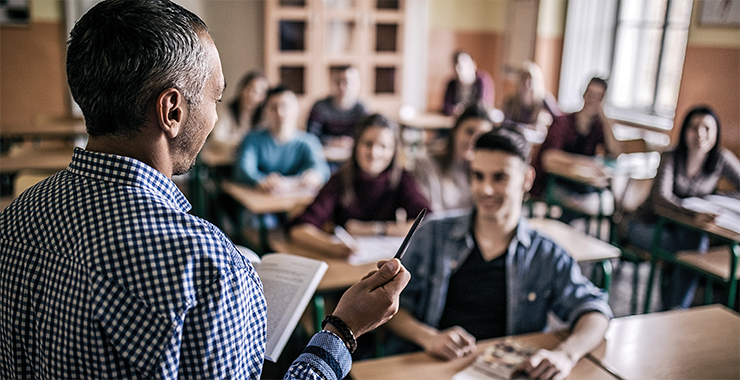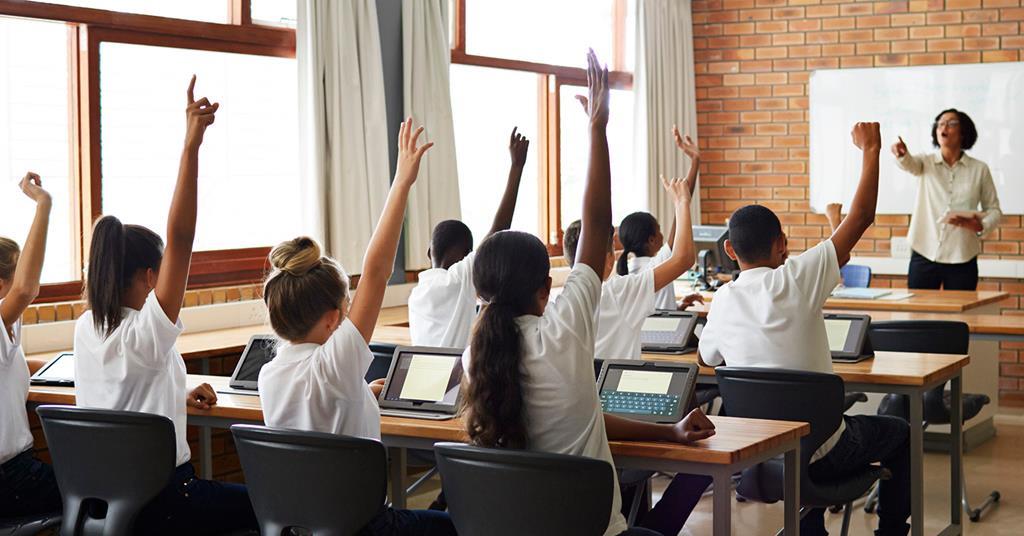Tailored Primary Science Tuition Singapore for Your Child’s Success
Tailored Primary Science Tuition Singapore for Your Child’s Success
Blog Article
A Comprehensive Guide to the Numerous Discovering Methods in Main Science Instruction
The expedition of varied knowing techniques in key scientific research guideline presents an opportunity for educators to improve student involvement and comprehension significantly. By checking out hands-on understanding strategies, inquiry-based strategies, and collective techniques, we can determine effective practices that accommodate different discovering designs. Furthermore, the assimilation of technology and set apart direction plays an important function in cultivating a comprehensive setting. Nevertheless, the question continues to be: how can these methods be successfully applied in the class to optimize their effect? The response hinges on a better examination of each strategy and its ramifications for mentor science.

Hands-On Learning Techniques
Hands-on understanding techniques play an essential duty in key science instruction, engaging trainees in active expedition and trial and error. These methods permit learners to interact directly with products and sensations, promoting a deeper understanding of clinical ideas. By utilizing manipulatives, versions, and real-life experiments, teachers develop an environment where students can observe, hypothesize, and check their ideas.
Such strategies not only improve comprehension yet also cultivate crucial reasoning and analytical skills. When pupils get involved in tasks like building simple equipments, planting seeds, or conducting chemical reactions, they are urged to ask concerns and look for answers via their own monitorings. This experiential technique assists to demystify complicated scientific principles, making them a lot more relatable and obtainable.
Additionally, hands-on learning advertises collaboration among peers, as pupils usually work in teams to carry out experiments or share findings. This synergy not only improves their knowing experience but additionally establishes vital social skills. Inevitably, integrating hands-on strategies in primary scientific research instruction cultivates a lifelong love of understanding and interest concerning the natural globe, laying a strong structure for future academic quests in scientific research and beyond.
Inquiry-Based Understanding
Inquiry-based knowing is a training approach that motivates pupils to ask questions, check out sensations, and construct their very own understanding of scientific ideas. This method moves the emphasis from traditional teacher-led direction to a much more student-centered experience, where students take the initiative in their educational trip. By cultivating curiosity, inquiry-based knowing advertises much deeper involvement with the product, allowing students to discover subjects in a meaningful context.
In method, this technique usually involves hands-on experiments, observations, and crucial thinking activities that straighten closely with the scientific method. Students are encouraged to formulate hypotheses, design investigations, and evaluate data, which grows crucial abilities such as logical and analytic thinking. The function of the teacher in this framework is to assist in expedition, assisting trainees with the query process while encouraging independent thought and cooperation.
Moreover, inquiry-based learning nurtures a feeling of possession over the discovering process, motivating students to seek understanding actively. This approach not just enhances understanding of scientific principles however also fosters a long-lasting love for discovering, furnishing trainees with the skills necessary to browse a significantly complicated world.
Collaborative Learning Approaches
Collective discovering approaches equip pupils to involve in meaningful interactions with peers, cultivating a common responsibility for their academic results. In primary science direction, these approaches encourage learners to collaborate to check out clinical ideas, resolve issues, and carry out experiments (primary science tuition Singapore). By joining team tasks, pupils can leverage diverse perspectives, permitting richer understanding and retention of clinical knowledge
One key aspect of collaborative knowing is the emphasis on communication skills. Students should verbalize their ideas, pay attention proactively to others, and discuss ideas, all of which are important expertises in both real-world and scholastic contexts. This social communication not only improves their understanding of scientific principles but also advertises synergy and dispute resolution skills.
Furthermore, collaborative knowing typically causes boosted motivation and engagement. When pupils see the worth of their contributions within a group, they are more probable to take ownership of their discovering journey. Educators can facilitate this procedure deliberately structured team jobs that line up with curriculum objectives while supplying assistance on effective cooperation methods. Generally, incorporating collaborative understanding techniques in primary scientific research instruction grows a dynamic understanding setting that prepares pupils for future academic and social obstacles.
Technology Combination in Scientific Research
The integration of technology in main scientific research guideline enhances discovering experiences by offering innovative tools and sources that sustain numerous teaching approaches, including collective understanding - primary science tuition Singapore. The usage of digital platforms, simulations, and interactive applications allows trainees to engage deeply with scientific ideas, promoting a more hands-on approach to knowing
Digital laboratories, for instance, enable learners to conduct experiments safely and efficiently, promoting inquiry-based learning. These devices can imitate real-world clinical situations, permitting pupils to imagine complicated processes that would be challenging to replicate in a knockout post a conventional classroom setting. Additionally, technology his comment is here fosters interaction and cooperation amongst trainees, as they can share findings and interact on jobs with on the internet platforms.
In addition, multimedia discussions and educational video clips can enhance lessons by satisfying varied discovering styles, making abstract principles a lot more available. Information evaluation tools additionally equip pupils to gather and interpret clinical data, strengthening important believing abilities. In general, the strategic consolidation of technology in main science direction not just enhances involvement however also prepares trainees for a highly sophisticated culture, equipping them with crucial skills for future clinical endeavors.
Set Apart Instruction Methods
Differentiated direction approaches are necessary for resolving the diverse requirements of students in primary science education and learning. These techniques make it possible for educators to tailor their mentor approaches to accommodate varying capabilities, rate of interests, and finding out styles within the classroom. By utilizing separated guideline, educators can create an inclusive environment that promotes involvement and boosts understanding of clinical concepts.
One efficient approach is to make use of flexible grouping, which permits pupils to team up with peers at comparable ability degrees or with varying point of views. This technique urges peer understanding and advertises essential reasoning. In addition, using options in tasks can equip students, allowing them to pick projects that reverberate with their passions while still satisfying curricular objectives.
Furthermore, integrating tiered assignments is an additional valuable strategy. Deliberately jobs with differing levels of intricacy, instructors can make certain that all trainees are appropriately tested, no matter their efficiency. Using formative assessments to determine comprehending further makes it possible for instructors to adjust their training methods dynamically, making certain that each learner receives the assistance they need.
Eventually, executing set apart direction techniques in key science education and learning not only boosts student understanding outcomes yet also grows a passion for science, preparing pupils for future academic quests.

Final Thought
In recap, effective main scientific research guideline demands a complex approach that encompasses hands-on knowing, inquiry-based techniques, and collective strategies. The assimilation of technology and differentiated instruction even more caters to diverse knowing styles, fostering go right here an environment conducive to exploration and critical thinking.
The expedition of varied knowing methods in primary scientific research guideline offers a chance for teachers to enhance student involvement and understanding dramatically.Hands-on discovering methods play an essential function in primary scientific research direction, engaging students in energetic expedition and experimentation.Inquiry-based learning is an educational technique that encourages pupils to ask concerns, examine phenomena, and create their own understanding of scientific principles.Collective learning strategies equip students to involve in significant communications with peers, fostering a common obligation for their instructional results. In general, including collective learning techniques in primary scientific research instruction grows a vibrant knowing environment that prepares trainees for future scholastic and social difficulties.
Report this page